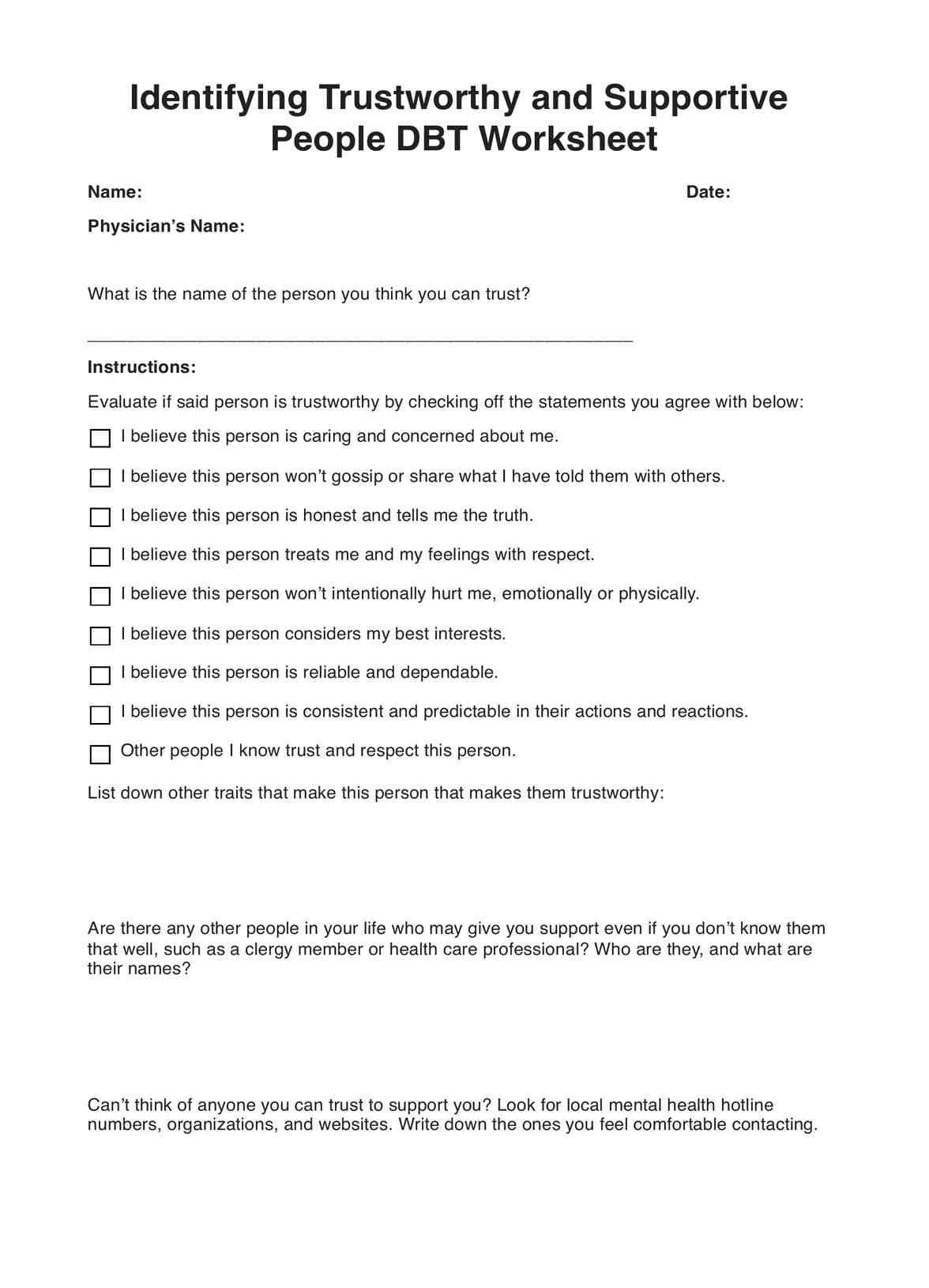A client may take around 30 minutes or more, depending on how many people they find trustworthy who can support them.

Identifying Trustworthy and Supportive People DBT Worksheet
Give your client an Identifying Trustworthy and Supportive DBT to help them identify people who can provide support when needed.
Use Template
Identifying Trustworthy and Supportive People DBT Worksheet Template
Commonly asked questions
It can help clients identify the people they can rely on for support on their healing journey. On the other hand, practitioners can use the worksheet to determine the patient's resources, and what type of sessions they can conduct/activities they can have the patient do.
It’s best used at the beginning of the client’s journey with the referring physician or when the client needs to be reminded of the help they can ask for during tough times.
EHR and practice management software
Get started for free
*No credit card required
Free
$0/usd
Unlimited clients
Telehealth
1GB of storage
Client portal text
Automated billing and online payments











